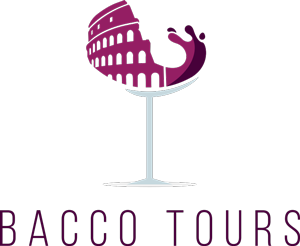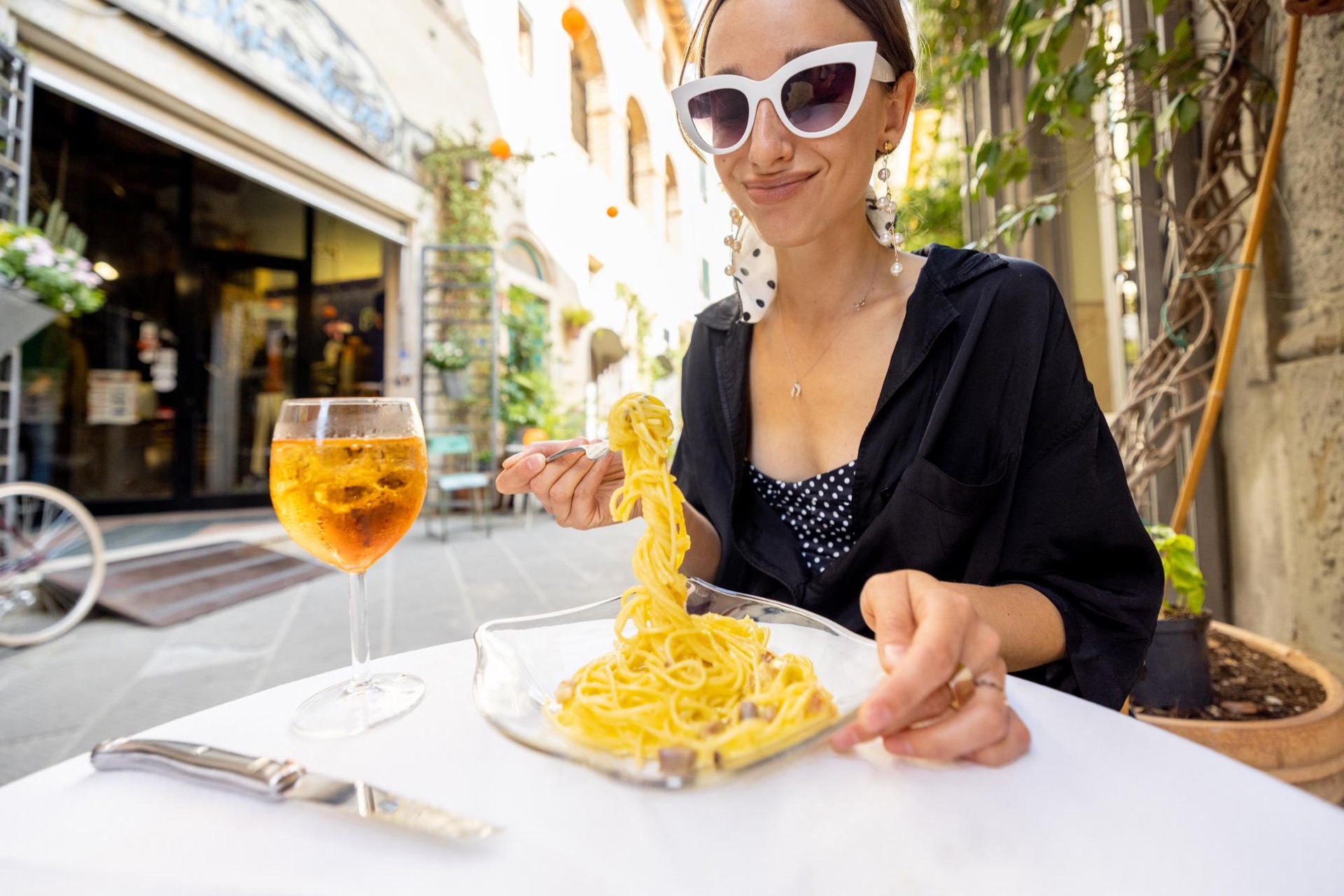1. Pasta Carbonara
All hail the legendary Pasta Carbonara—one of the most iconic pasta dishes in the world. While its fame has spread far and wide, it’s often misunderstood outside Italy, where chefs sometimes add cream, ham, or even peas. But true Carbonara is elegantly simple, made with just three ingredients: egg yolk, guanciale (cured pork cheek), and pecorino cheese. Though not an ancient recipe, it has roots in post-World War II history, inspired by the ingredients American soldiers had on hand—eggs, bacon, and cheese—before Romans added their twist with guanciale and pecorino. While spaghetti Carbonara is widely known, locals in Rome often prefer rigatoni, perfect for soaking up that rich, creamy sauce.
2. Porchetta
Porchetta panini are a staple of Roman street food, especially beloved during festivals and concerts, where food trucks known as paninari serve up these herb-infused roasted pork sandwiches. The most renowned porchetta hails from Ariccia, one of the charming towns in the Roman Castles region. Visit in September to experience the Porchetta Festival, a celebration of this mouthwatering tradition.
3. Jewish-Style Fried Artichoke
Artichokes are a Roman favorite, especially in spring. At the Artichoke Festival in Ladispoli, just 30 minutes from Rome, you’ll find them prepared in all sorts of ways. One standout is the Jewish-style fried artichoke, carciofi alla giudia, a crispy delicacy originating from Rome’s historic Jewish Ghetto. Another local favorite is carciofi alla romana, stuffed with garlic, parsley, and mint.
4. Tonnarelli Cacio e Pepe
Simple, sharp, and creamy, Cacio e Pepe is pasta stripped down to its essence—pecorino cheese and black pepper blended into a silky sauce. While spaghetti works, the ideal version uses fresh, homemade tonnarelli, a thicker, square-edged pasta that grabs onto the sauce beautifully.
5. Bucatini all’Amatriciana
This bold pasta dish combines the smoky richness of guanciale with a savory tomato sauce, all finished with a generous dusting of pecorino. Its name comes from the mountain village of Amatrice, near Rieti—sadly impacted by the 2016 earthquake but forever remembered through this flavorful dish.
6. Saltimbocca alla Romana
This classic Roman main dish brings together thin veal cutlets, savory prosciutto, and fragrant sage. Lightly cooked in wine and butter, it lives up to its name—saltimbocca—meaning “jumps in the mouth.”
7. Gricia
Think of Gricia as Carbonara’s older sibling—without the egg—or Amatriciana without the tomato. It’s a timeless combination of guanciale and pecorino, creating a salty, satisfying pasta that showcases simplicity at its best.
8. Trippa alla Romana
Tripe might not be for everyone, but in Rome, it’s a proud tradition. Known as part of the quinto quarto (the “fifth quarter”), these lesser-used cuts were once food for the poor but are now treasured in traditional trattorias. Roman-style tripe is slow-cooked in a rich tomato sauce and best enjoyed with a scarpetta—a piece of bread to mop up every last drop.
9. Abbacchio
Tender, flavorful Roman lamb—abbacchio—is a staple in local cuisine. While the rest of Italy calls it agnello, in Rome it has its own identity. Head to the cozy trattorias of Trastevere, Testaccio, or Garbatella for a true taste of this traditional dish.
10. Coda alla Vaccinara
Once considered a humble cut, oxtail is making a comeback in Roman kitchens. Coda alla vaccinara is slow-cooked for hours in a hearty tomato sauce until it melts off the bone. Like with tripe, don’t leave a drop behind—scarpetta is mandatory!

